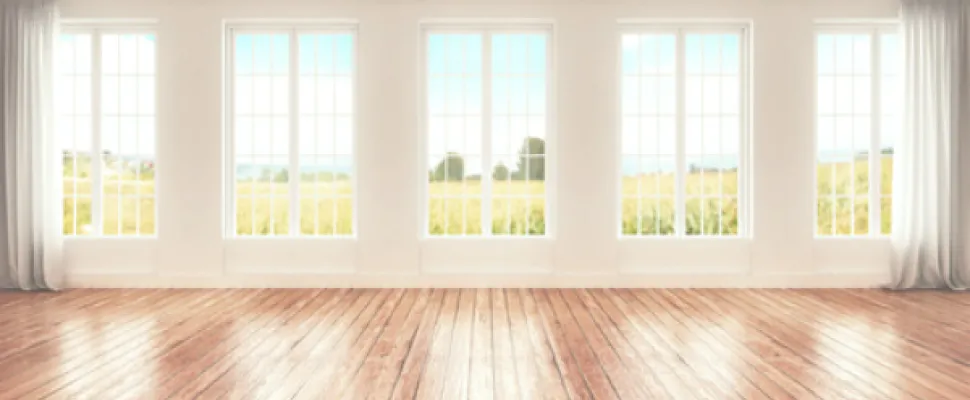
8 Ways to Make Your House Look Bigger Inside
You may not have had the budget to buy your 3,000 square foot dream house, but that doesn’t mean you have to live in a house that appears small and cramped. The following 8 ideas will make your small house look much bigger.
Evaluate Your Home’s Traffic FlowSometimes a room looks small because it feels small. Your home’s traffic flow, or how you and your family and guests move through it, is a big contributor to how you perceive the space. If you’ve never thought about flow, there’s a good chance your rooms are not achieving it.
With the help of a family member or friend, spend one day on the weekend going through each room to evaluate traffic flow. Does how you move through the space make sense? For instance, if you have to walk all the way around a room to get to the next room, the flow does not make sense.
Can you move easily through the space or are you stumbling around and over odd pieces of furniture? Are you having to squeeze between a sofa and the wall just to get to the other side? If so, it may be time for you to A) get rid of some extra and unnecessary pieces of furniture and/or B) rearrange your furniture so the positioning makes more sense and movement is easier.
Create Breathing RoomYou may think it makes sense to shove all of your furniture up against the wall in a small room, such as a small living room, but that “trick” doesn’t necessarily make the room look larger. It’s typically more effective to float your furniture, say a sofa, away from your wall. By doing so you create some breathing room around your furniture, which lends the appearance of more space.
Displace the Weight in the RoomNo, this tip has nothing to do with your chubby uncle. The idea here is to balance the light and heavy pieces in your room and “lighten” the entryway to that room. So for instance, instead of having someone see a large, heavy piece of furniture the minute they step into the space, rearrange your furniture so what’s there is either visually “light” or low, or even just have space. By making sure you balance the light and heavy pieces throughout your room, you won’t have all of the heavy furniture on one side, and your eye will keep moving throughout the room, eliciting a sense of space.
Be bold and have courage to experiment with rearranging your furniture. Consider trading pieces from different rooms. And, though smaller rooms often have limited ways the furniture can be arranged, just have fun and see what you can come up with.
Pale Hues Really Are BestWhile some professional designers can get away with applying darker paint to smaller rooms, us mere mortals should stick to paler hued paints such as white, cream, pale grays, blues and greens to keep the space feeling open, light, and airy.
Painting in a monochromatic theme is a great way to create depth and the illusion of space. Paint your walls, trim, and detailing in different shades of one color, such as white, off-white, and beige to expand a room.
Consider Multifunctional PiecesBuying furniture that serves multiple functions is an easy way to create more space. For instance, a vintage steamer trunk or ottoman with built-in storage can serve as a coffee table as well.
DeclutterNo one likes decluttering, yet the effects can be dramatic. By clearing floor space and counters of items you don’t use on a daily basis, you create a streamlined, spacious look.
If you make toast 4 times a year when you have guests, consider storing the toaster away in a cabinet. Maximize shelf space and tuck or nest small furniture pieces under large ones, or consider getting rid of them altogether.
Get Rid of Bulky Window CoveringsLarge spaces can handle floor length window treatments in a heavy fabric, but small spaces can’t. Depending on where your home is located, not all of your windows may even face neighbors or the street, and you may be able to leave windows bare to let all of the sunlight in.
Other rooms, like bedrooms, can still have privacy using roman shades made of lighter fabric.
Opt for Hardwood Floors Instead of Wall-to-Wall CarpetingA hardwood floor that is broken up with area rugs can make a space feel bigger as opposed to one solid colored piece of carpeting underneath your feet. The bonus is that hard wood floors are healthier for those in your house who may have allergies as they don’t trap dust.
Just because your house is small doesn’t mean it has to look or feel that way. By following these tips, you can create spaces that look and feel much larger.
